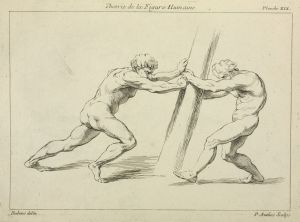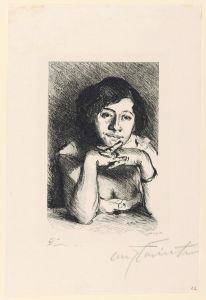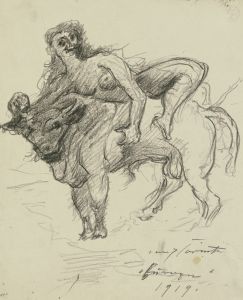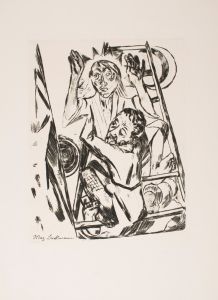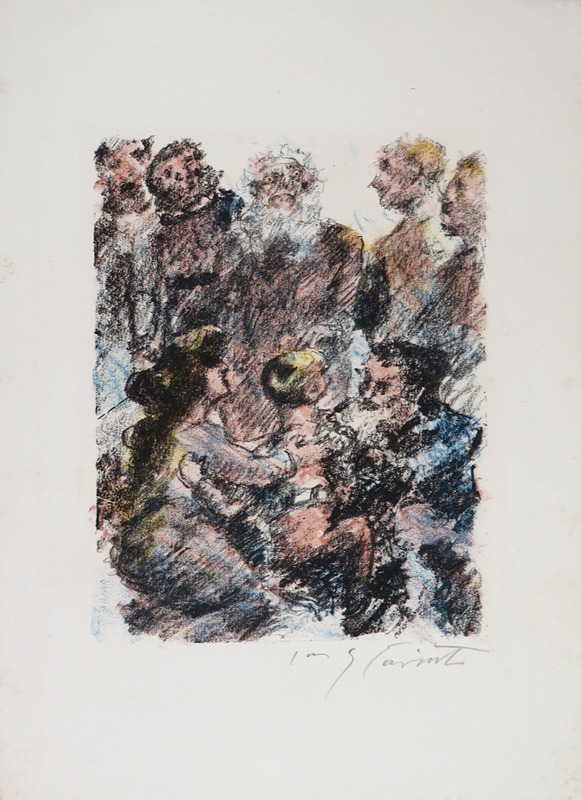
Wilhelm Tell Der Tod Attinghausens
A hand-painted replica of Lovis Corinth’s masterpiece Wilhelm Tell Der Tod Attinghausens, meticulously crafted by professional artists to capture the true essence of the original. Each piece is created with museum-quality canvas and rare mineral pigments, carefully painted by experienced artists with delicate brushstrokes and rich, layered colors to perfectly recreate the texture of the original artwork. Unlike machine-printed reproductions, this hand-painted version brings the painting to life, infused with the artist’s emotions and skill in every stroke. Whether for personal collection or home decoration, it instantly elevates the artistic atmosphere of any space.
Lovis Corinth was a prominent German painter and printmaker, known for his contributions to the Impressionist and Expressionist movements. One of his notable works is "Wilhelm Tell Der Tod Attinghausens," which translates to "William Tell: The Death of Attinghausen." This painting is part of Corinth's exploration of historical and literary themes, reflecting his interest in dramatic narratives and complex human emotions.
"Wilhelm Tell Der Tod Attinghausens" is inspired by Friedrich Schiller's play "Wilhelm Tell," which is based on the legendary Swiss folk hero William Tell. The play, written in 1804, is a classic of German literature and dramatizes the struggle for Swiss independence from Habsburg rule in the early 14th century. The character of Attinghausen, a Swiss patriot and nobleman, represents the old guard of Swiss society, and his death symbolizes the end of an era and the beginning of a new chapter in Swiss history.
Corinth's painting captures the moment of Attinghausen's death, a scene that is charged with emotion and historical significance. The composition is dynamic, with a focus on the figures surrounding Attinghausen, who is depicted in a state of repose, suggesting both the finality of death and the dignity of his character. Corinth's use of color and brushwork is expressive, conveying the tension and drama of the scene. The painting reflects Corinth's mastery of capturing human emotion and his ability to translate complex narratives into visual form.
Lovis Corinth was known for his vigorous and expressive style, which evolved over his career. Initially influenced by Impressionism, his work later incorporated elements of Expressionism, characterized by bold colors and dynamic compositions. "Wilhelm Tell Der Tod Attinghausens" exemplifies this stylistic evolution, showcasing Corinth's skill in blending realism with expressive elements to enhance the emotional impact of the scene.
The painting is part of Corinth's broader body of work that often drew upon historical, mythological, and literary sources. His interest in such themes was not only a reflection of his artistic inclinations but also indicative of the cultural milieu of his time, where there was a renewed interest in national identity and historical narratives. Corinth's ability to infuse these themes with personal expression and emotional depth made his work resonate with contemporary audiences and continues to be appreciated today.
Lovis Corinth's contributions to art were significant during his lifetime, and he remains an important figure in the history of modern art. His works are held in high esteem and are part of major collections worldwide. "Wilhelm Tell Der Tod Attinghausens" is a testament to his skill as a painter and his ability to engage with complex themes in a manner that is both visually compelling and emotionally profound.






